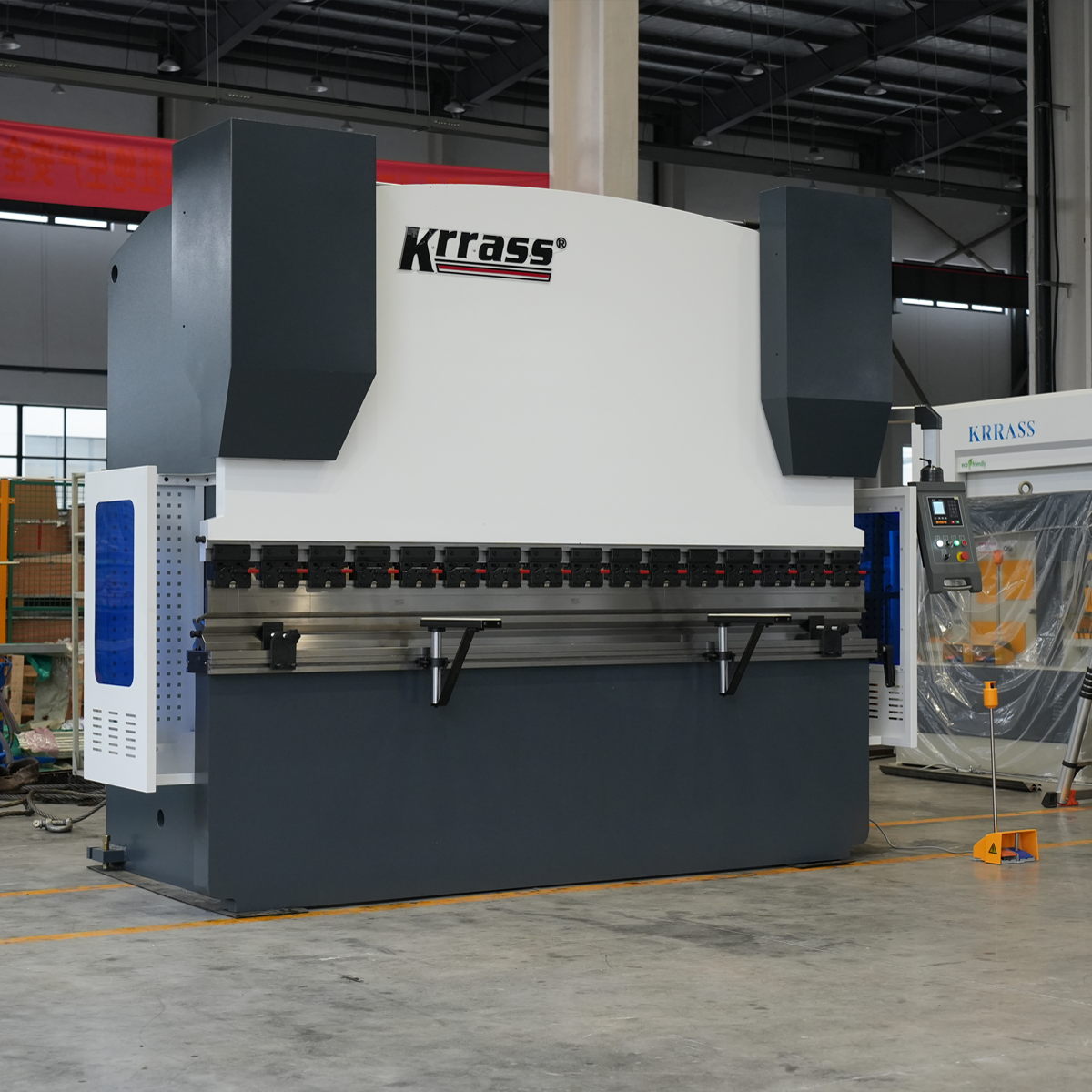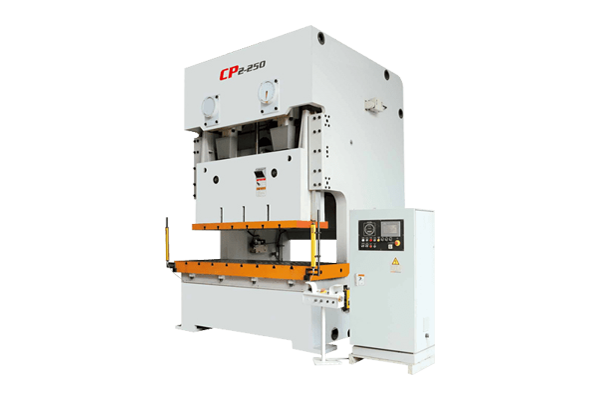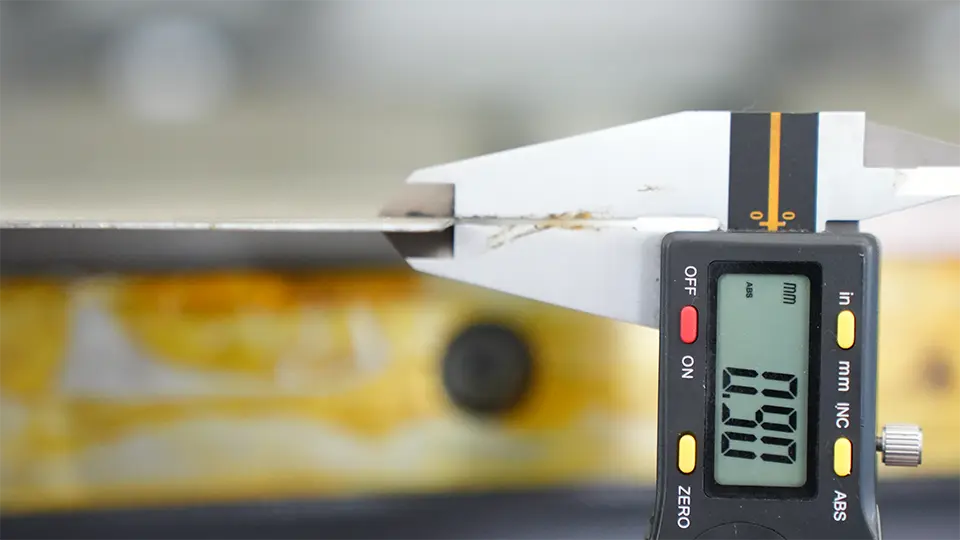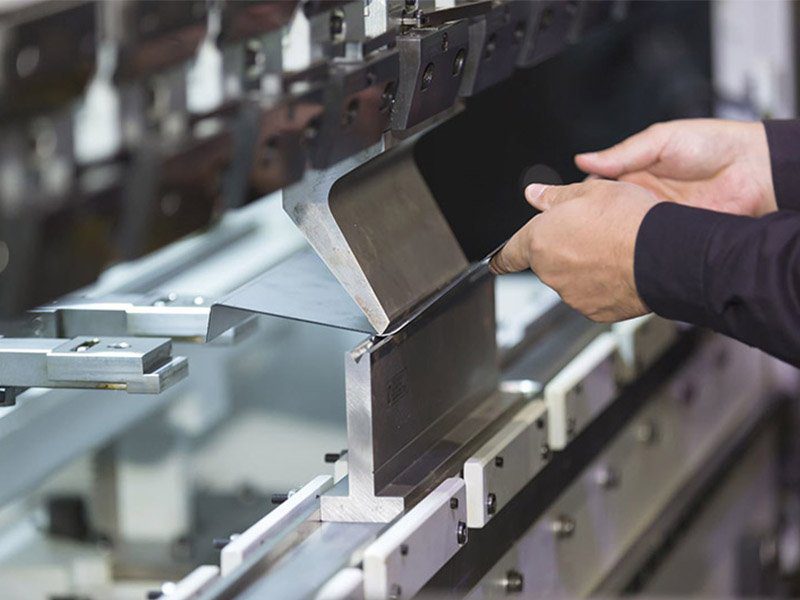In the dynamic world of metal fabrication, understanding the capabilities and applications of press brakes and punch presses is crucial for manufacturers. These tools are the backbone of shaping and customizing metal, offering unparalleled precision and efficiency. In this comprehensive guide, we delve into the mechanics, applications, benefits, and critical comparisons between press brakes and punch presses, providing insights essential for any industry professional.
- What is Press Brake
- Operational Mechanics of Press Brakes
- Materials and Applications
- Advantages of Using Press Brakes
- Challenges and Limitations of Press Brake
- What is Punch Press Mechanics
- Punch Press Operations
- Industrial Applications
- Benefits of Punch Presses
- Challenges and Limitations of Punch Press
- Press Brake vs. Punch Press: A Detailed Comparison
- Choosing the Right Tool for the Job
1.What is Press Brake
When we talk about press brakes, we're diving into the realm of precision sheet metal bending. A press brake is a vital machine tool used in manufacturing that specializes in bending sheet and plate material, most commonly sheet metal. It forms predetermined bends by clamping the workpiece between a matching punch and die.
The core function of a press brake lies in its ability to create a variety of bends and angles with high precision. This is achieved through the application of significant force, or pressure, to the material. The machine typically consists of a flat surface (the bed) and a clamping bar (the ram), which presses the material into a specific form or die. The sophistication of press brakes has evolved significantly, with modern machines offering programmable back-gauges, precision control, and varying types of bending processes.
What sets press brakes apart in the manufacturing industry is their versatility and precision. They are used in a multitude of applications, ranging from small brackets to large metal components. The flexibility to handle different sizes and thicknesses of materials makes them a staple in workshops and production lines where metal bending is a requirement.
2.Operational Mechanics of Press Brakes: Bending Process Explained
The operational mechanics of press brakes are fascinating, combining raw power with intricate precision. At the heart of this process is the bending operation. This involves transforming a flat piece of metal into a specific shape by applying force. The bending process begins with the placement of the sheet metal on the bed of the press brake. The clamping bar, or ram, then descends and presses the metal into the die, creating a bend.
This bending operation can be simplified into three key stages: positioning, pressing, and releasing. During positioning, the sheet metal is aligned accurately using back-gauges to ensure the bend is made at the correct angle and position. Pressing is where the actual bending occurs, and the metal is formed along the die. Releasing involves the retraction of the ram, allowing the newly bent metal to be removed.
Precision and Control in Bending
Precision and control are paramount in the bending process of a press brake. The accuracy of the bend is influenced by several factors, including the type of press brake, the quality of the tooling, the material being bent, and the operator's expertise. Advanced press brakes are equipped with CNC (Computer Numerical Control) technology, allowing for highly precise and repeatable bends.
CNC press brakes enhance the bending process through programmable settings, which control the angle of the bend, the depth of the ram, and the pressure applied. This automation ensures consistent results, crucial for large-scale production where uniformity is key. Additionally, these machines can store multiple programs, making them versatile for various bending tasks.
The control in bending also extends to the operator's ability to make adjustments based on the material. Factors like metal thickness, type, and desired bend angle are all considered to achieve the perfect bend. This adaptability is what makes the press brake an indispensable tool in the metal fabrication industry.
3.Materials and Applications: Suitable Materials for Press Brake
The versatility of press brakes lies in their ability to work with a wide range of materials. The most commonly used materials in a press brake include various grades of steel, aluminum, brass, copper, and sometimes special alloys. Each material behaves differently under pressure and requires specific settings on the press brake for optimal bending.
Steel, known for its strength and durability, is a popular choice for heavy-duty applications. Different steel grades, like mild steel, stainless steel, and high-strength steel, offer varying degrees of bendability. Aluminum, on the other hand, is lighter and more pliable, making it suitable for applications where weight is a concern. Brass and copper are used for their unique color and finish, often in decorative or architectural applications.
Common Uses in Industry
The applications of press brakes span across various industries. In automotive manufacturing, they are used to shape body panels, frames, and other structural components. In construction, press brakes help in creating metal beams, pipes, and roofing materials. Aerospace applications include forming parts for aircraft structures, where precision and material strength are critical.
Additionally, press brakes are widely used in the fabrication of metal furniture, electrical cabinets, and HVAC systems. Their ability to produce precise and consistent bends makes them ideal for creating complex components in these sectors. Custom metalwork, like signage and art installations, also relies on press brakes for creating intricate designs and shapes.

4.Advantages of Using Press Brakes
The use of press brakes in metal fabrication brings a host of advantages, significantly impacting both the efficiency and quality of the manufacturing process. One of the primary benefits is the high level of precision and consistency they offer. With advancements in CNC technology, press brakes can achieve extremely accurate bends, crucial for complex designs and consistent production runs.
Another advantage is the versatility of press brakes. They can handle a wide range of materials and thicknesses, making them suitable for various applications across different industries. This flexibility allows manufacturers to use a single machine for multiple projects, reducing the need for specialized equipment.
Press brakes also contribute to improved safety in the workplace. Modern press brakes come equipped with safety features like light curtains and safety guards, minimizing the risk of accidents during operation. This is especially important in an industry where handling heavy and sharp materials is commonplace.
The efficiency of press brakes is another significant benefit. They can produce bends at a faster rate compared to manual methods, which not only speeds up the production process but also reduces labor costs. Additionally, the ability to store and recall bending programs allows for quick setup times between different jobs.
5.Challenges and Limitations of Press Brakes
While press brakes are invaluable tools in metal fabrication, their use is not without challenges and limitations. One significant limitation is the range of material types and thicknesses they can handle. Different materials have unique bending properties; for example, some high-strength or special alloy metals may not be suitable for bending with standard press brakes.
Another challenge lies in achieving precision. Even with advanced CNC control systems, the skill and experience of the operator are crucial for high-precision bending. Inaccuracies in bending angles or positions can lead to a decrease in the quality of the final product.
Equipment maintenance and tool wear also pose problems. Frequent use or working with harder materials accelerates the wear and tear of dies and other critical components, affecting the quality of processing and increasing maintenance costs and downtime.
6.What is Punch Press Mechanics
To understand punch press mechanics, it's important to know that a punch press is a type of machine press used to cut holes in material. It operates by using a punch and a die – the punch forces the material into the die to create a hole that corresponds to the shape and size of the punch. This process is often referred to as punching.
The mechanics of a punch press revolve around the conversion of rotational motion into linear motion. This is typically achieved through a motor that drives a flywheel. The flywheel then engages a clutch that drives a crank mechanism, converting the rotational motion into the up-and-down linear motion necessary for the punching operation.
An important aspect of punch press mechanics is the force exerted by the punch. This force needs to be strong enough to cut through the material, which depends on the material's thickness and type. The precision of the punch and die alignment is also critical, as any misalignment can lead to poor quality cuts or damage to the tooling.
7.Punch Press Operations: The Punching Process
The punching process is central to punch press operations. It starts with the placement of the material, often metal sheets, on the press. The appropriate punch and die are then selected based on the desired shape and size of the hole to be created. The punch descends and pushes the material into the die, effectively cutting a hole through the material.
This process can be quite rapid, with some punch presses capable of making hundreds of punches per minute. The speed and efficiency of the punching process are influenced by several factors, such as the type of material being punched, the thickness of the material, and the complexity of the hole pattern. Thicker and harder materials require more force and time to punch, which can reduce the overall speed.
Speed and Efficiency Factors
The efficiency of a punch press is also impacted by the machine's design and capabilities. Advanced models with CNC technology offer improved precision and speed, as they can quickly and accurately move the material and punch to the correct positions. This automation not only increases speed but also reduces the likelihood of errors, which can be costly in terms of time and materials.
8.Industrial Applications of Punch Presses
Punch presses play a vital role in numerous industrial sectors, showcasing their versatility and indispensability. In automotive manufacturing, they are used to create precision parts like brackets, gears, and various components with complex shapes. This precision is crucial for ensuring the functionality and safety of vehicles.
In the construction industry, punch presses are instrumental in fabricating metal components used in building structures, such as beams, frames, and panels. Their ability to handle large-scale materials and produce consistent results makes them ideal for this sector.
The electronics industry also relies heavily on punch presses. They are used to create intricate parts found in electronic devices, such as circuit boards, enclosures, and connectors. The precision and ability to work with various metals make punch presses ideal for these applications.

The adoption of punch presses in manufacturing brings numerous benefits, making them a valuable asset in any industrial environment. One of the most significant advantages is their high level of efficiency. With the capability to perform rapid and repeated operations, punch presses can significantly speed up production processes. This is especially beneficial in high-volume manufacturing, where time efficiency directly translates to increased productivity and reduced costs.
Precision is another hallmark of punch presses. Advanced models, particularly those with CNC technology, can achieve incredibly accurate punches, essential for creating components that meet strict specifications. This precision ensures consistency in production, which is vital for maintaining quality standards, especially in industries like automotive and aerospace where even minor deviations can have significant consequences.
Versatility is also a key advantage of punch presses. They can handle a wide range of materials and thicknesses and can be equipped with various tools to perform different operations like punching, forming, and marking. This versatility allows manufacturers to use a single machine for multiple applications, reducing the need for additional equipment and streamlining the production process.
10.Challenges and Limitations of Punch Presses
While punch presses are invaluable tools in many manufacturing processes, they do come with certain challenges and limitations. One of the primary concerns is tool wear. Frequent use, especially with hard or abrasive materials, can lead to wear and tear on the punches and dies. This not only affects the quality of the output but also increases maintenance costs and downtime for replacements.
Another limitation is the thickness and type of materials that can be processed. Although punch presses are versatile, they have their bounds in terms of the material thickness and hardness they can effectively handle. Exceeding these limits can result in incomplete punches, damage to the machine, or compromised quality of the final product.
The design complexity is also a factor to consider. While punch presses are excellent for creating standard shapes and holes, they may not be the best choice for extremely intricate designs. In such cases, alternative or supplementary technologies like laser cutting might be more appropriate.
11.Press Brake vs. Punch Press: A Detailed Comparison
When comparing press brakes and punch presses, it's important to understand that while both are essential in metal fabrication, they serve different purposes. A press brake is primarily used for bending sheet metal into various angles and shapes, offering versatility in terms of bending angles and depths. On the other hand, a punch press is used for making holes or cutting shapes out of metal sheets, focusing on repetitiveness and speed for producing identical shapes.
In terms of precision, both machines offer high accuracy, but the nature of their tasks differs. Press brakes, with CNC technology, provide precise bending capabilities, essential for complex fabrication requiring exact angles. Punch presses also offer precision, especially with CNC control, but their precision is more about the placement and size of holes or cut-outs.
The choice between a press brake and a punch press often comes down to the specific requirements of the project. For operations requiring detailed shapes with various bends, a press brake is more suitable. Conversely, for projects needing multiple identical cutouts or holes, a punch press is more efficient.
Material thickness and type also play a significant role in determining the appropriate machine. Press brakes can handle a wider range of material thicknesses, while punch presses have limitations regarding the thickness and hardness of materials they can effectively process.
| Aspect | Press Brake | Punch Press |
| Primary Use | Bending sheet metal into angles and shapes | Making holes or cutting shapes out of metal sheets |
| Versatility | High, with various bending angles and depths | Focused on producing identical shapes |
| Precision | High, especially with CNC for exact angles | High, particularly in placement and size of holes |
| Project Suitability | Best for detailed shapes with various bends | Efficient for multiple identical cutouts or holes |
| Material Handling | Handles a wider range of thicknesses | Limited in thickness and hardness of materials |
12.Choosing the Right Tool for the Job
Choosing between a press brake and a punch press hinges on several critical factors. The decision largely depends on the specific requirements of the manufacturing project, including the material type, the complexity of the task, production volume, and efficiency considerations.
Firstly, consider the material type and thickness. If the project involves bending thicker or larger sheets of metal into various shapes and angles, a press brake is typically more suitable. In contrast, for creating repetitive patterns, holes, or cut-outs in thinner materials, a punch press would be the preferred choice.
The complexity of the task is also a key factor. Press brakes are ideal for complex bending tasks that require precision and flexibility in terms of angles and depths. Punch presses excel in tasks that require the creation of identical shapes or patterns at a high speed.
When it comes to production volume, punch presses are more efficient for high-volume tasks due to their speed and ability to create consistent, repeatable patterns. Press brakes, while versatile, are better suited for low-to-medium volume tasks that require a high degree of customization.

Partner with KRRASS: Your Gateway to Advanced Metal Fabrication Solutions
In conclusion, the choice between a press brake and a punch press significantly impacts the efficiency and quality of metal fabrication. Understanding the strengths and limitations of each tool is key to optimizing your manufacturing process. As a leading manufacturer in the realm of Sheet Metal Machines, KRRASS stands at the forefront of providing top-tier solutions. Embracing innovation and precision, KRRASS offers a range of products that embody the pinnacle of metal fabrication technology. Visit www.krrass.com to explore how our expertise can elevate your production capabilities.
Read More:
Electric Press Brake VS Hydraulic Press Brake: Which One Right for You?
Press Brake U Bend: Essential Techniques
Deciding Between Press Brake and Roll Forming: Key Factors to Consider





